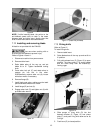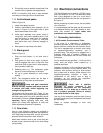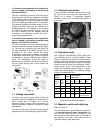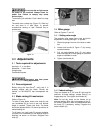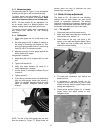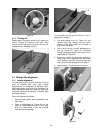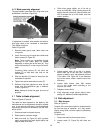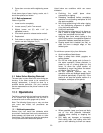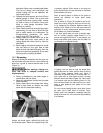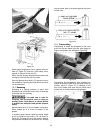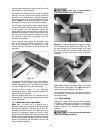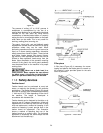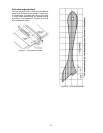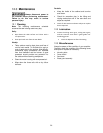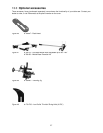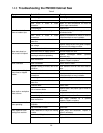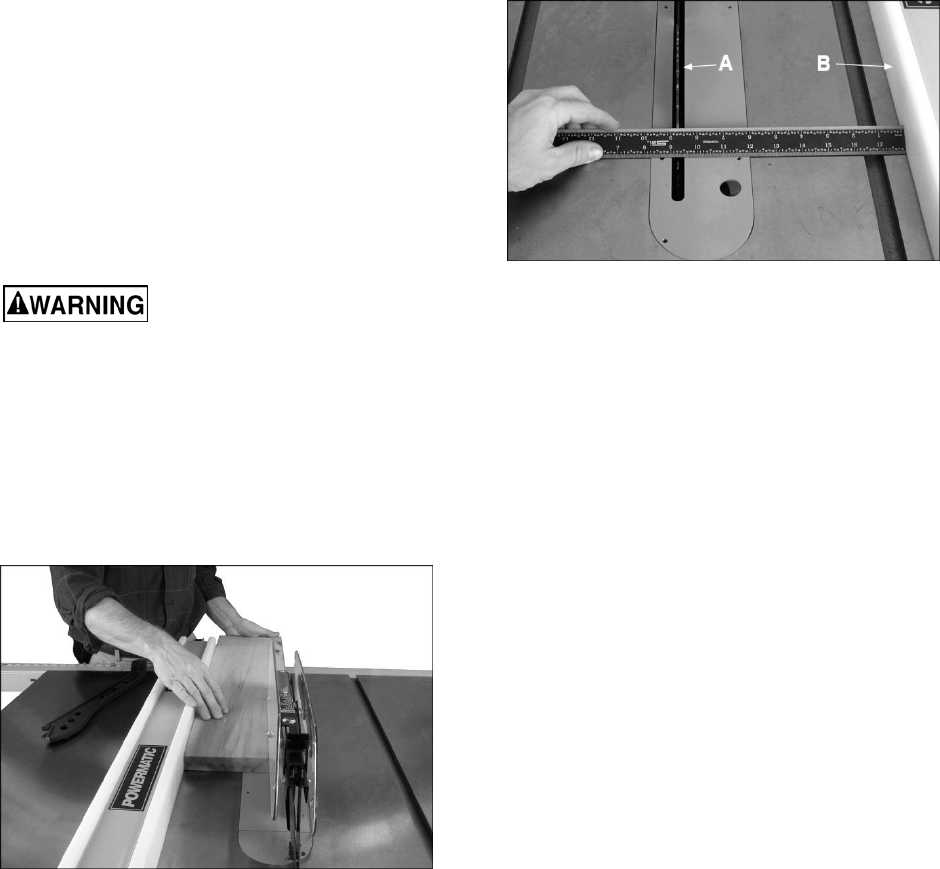
21
accidents. Never use a cracked saw blade.
The use of a sharp, well maintained, and
correct cutting tool for the operation will
help avoid injuries.
Support the work properly and hold it firmly
against gauge or fence. Use a push stick
or push block when ripping short, narrow
(6" width or less), or thin work. Use a push
block or miter gauge hold-down when
dadoing or molding.
Never use the fence as a length stop when
crosscutting. Do not hold or touch the free
end or cutoff section of a workpiece. On
through-sawing operations, the cutoff
section must NOT be confined.
Always keep your hands out of line of the
saw blade and never reach back of the
cutting blade with either hand to hold the
workpiece.
Bevel ripping cuts should always be made
with the fence on the right side of saw
blade so that the blade tilts away from the
fence and minimizes possibility of the work
binding and the resulting kickback.
10.2 Rip sawing
Ripping is feeding the workpiece with the grain into
the saw blade using the fence or other positioning
device as a guide to ensure desired width of cut
(Figure 31).
Before starting a ripping cut,
verify that fence is clamped securely and
aligned properly.
Never rip freehand or use miter gauge in
combination with the fence.
Never rip workpieces shorter than the saw
blade diameter.
Never reach behind the blade with either
hand to hold down or remove the cutoff
piece with the saw blade rotating.
Figure 31
Always use blade guard, splitter/riving knife and
anti-kickback pawls. Make sure splitter/riving knife
is properly aligned. When wood is cut along the
grain, the kerf tends to close and bind on the blade
and kickbacks can occur.
Note: A warning decal is affixed to the guard to
remind the operator of some basic safety
procedures.
The rip fence (A, Figure 32) should be set for the
width of the cut by using the scale on the front rail,
or by measuring the distance between blade (A)
and fence (B). Stand out of line with saw blade and
workpiece to avoid sawdust and splinters coming
off the blade or a potential kickback.
If the work piece does not have a straight edge,
nail an auxiliary straight edged board on it to
provide one against the fence. To cut properly, the
board must make good contact with the table. Do
not attempt to cut warped boards.
Figure 32
In ripping, use one hand to hold the board down
against the fence or fixture, and the other to push it
into the blade between blade and fence. If
workpiece is narrower than 6" or shorter than 12",
use a push stick or push block to push it through
between fence and blade (Figure 33). Never push
in a location such that the pushing hand is in line
with the blade. Move the hand serving as a hold-
down a safe distance from blade as cut nears
completion.
For very narrow ripping where a push stick cannot
be used, use a push block or auxiliary fence.
Always push the workpiece completely past the
blade at the end of a cut to minimize the possibility
of a kickback.



